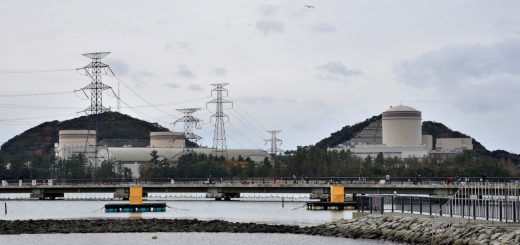CNIC Statement: We condemn the hasty decision to restart Onagawa Nuclear Power Plant Unit 2
Citizens’ Nuclear Information Center
November 11, 2020
On November 11, 2020, Miyagi Prefectural Governor Murai Yoshihiro held talks with Onagawa Town Mayor Suda Yoshiaki and Ishinomaki City Mayor Kameyama Hiroshi, the three leaders officially announcing that they would give consent to restart of the Tohoku Electric Power Co.’s Onagawa Nuclear Power Plant (NPP) Unit 2. Both Onagawa and Ishinomaki are located in Miyagi Prefecture in northern Japan, and jointly host the nuclear power plant.
In February 2020, Onagawa NPP Unit 2 cleared the screening conducted by the Nuclear Regulation Authority (NRA). The utility aims to restart the reactor in or after FY2022, when the work on safety and disaster prevention measures is scheduled to be completed.
As for Onagawa NPP Unit 1, decommissioning work is now underway, and in the case of Unit 3, the utility is preparing to file the application for its restart. Currently, approximately 1,100 residents are living within a 5km radius of the Onagawa plant, and within the 30km radius, there are three cities, namely Ishinomaki, Tome and Higashi-matsushima, as well as four towns, Onagawa, Wakuya, Misato, and Minami Sanriku. The number of residents who would need to evacuate in the case of an emergency totals approximately 199,000. The municipal assemblies of Onagawa and Ishinomaki, and the Miyagi Prefectural assembly have already adopted petitions for giving consent to restarting the Onagawa plant.
On November 9, a meeting of the mayors of all cities, towns and villages in Miyagi Prefecture was held in Sendai City, the prefectural capital. During the one-hour meeting, some of the participating 35 mayors, such as the town mayors of Misato, Kamimachi, and Shikama, expressed strong opposition to the restart of the Onagawa NPS. They maintained that around 40,000 residents are still unable to return to their hometowns because of extensive damage from the 2011 severe accident at Fukushima Daiichi Nuclear Power Station (FDNPS). They also asserted that large numbers of Miyagi prefectural residents are worried about the planned restart of the plant. Despite their strong objection, Miyagi Governor Murai made the decision to approve resumption of the plant’s operation after discussing the issue with only the mayors of the two municipalities that host the nuclear plant. This means that Murai made a high-handed, coercive decision that pays no attention to the opinions of local residents. It is thus difficult to say that his conclusion is based on a prefectural consensus.
The Onagawa NPP has three boiling water reactors, the same type as those installed at Fukushima Daiichi NPS. They were damaged by the Great East Japan Earthquake and subsequent tsunami disaster in March 2011. The underground floors of Unit 2 were flooded after the facility was hit by a tsunami of up to 13 meters. The plant’s emergency cooling system, however, functioned normally, and the plant narrowly escaped a meltdown of the type that occurred at the Fukushima Daiichi NPS.
Currently, the verification of the Fukushima nuclear accident has yet to be completed and sufficient measures against basic earthquake ground motion have not been worked out.
Now that nine years have already passed since the great Tohoku earthquake and subsequent tsunami inflicted devastating damage on Onagawa and Ishinomaki, reconstruction work in the damaged areas is making progress. But should a severe accident occur at the Onagawa NPS, located on the Oshika Peninsula, not only the areas within the 30km radius of the plant, but also Sendai, and the Sanriku coastal areas could suffer massive damage. The residents living on the Oshika Peninsula would be required to evacuate by using the road near the nuclear plant. But if the road on the peninsula is hit by a tsunami, it would probably become impassable. Moreover, the ongoing novel coronavirus pandemic is making effective evacuation plans unfeasible.
Tohoku Electric is reportedly planning to restart the Onagawa plant in or after FY2022, when the work on safety and disaster prevention measures is slated to be completed. If so, why did the Miyagi prefectural governor give consent to restarting the plant so soon? Governor Murai, Onagawa Town Mayor and Ishinomaki City Mayor must fulfill their responsibility as politicians to fully explain their hasty actions. We call on the three leaders to listen more sincerely to local government officials and residents in Miyagi Prefecture who are opposed to the resumption of the plant’s operation. They should sincerely contemplate what the most important requirements for restoration and the future of the prefecture are, and withdraw their consent to restart the Onagawa plant.

